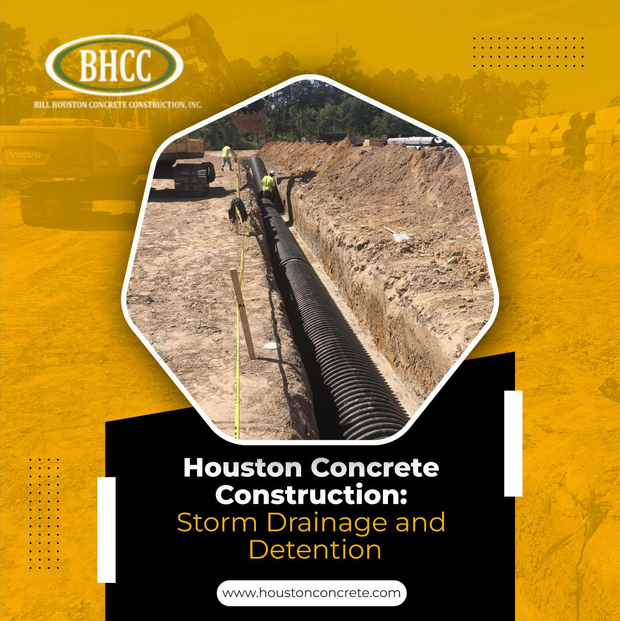Stormwater is the term for water accumulating on the ground during rain and snowfall. When artificial, hard surfaces such as parking lots, roads, buildings, and compacted soil take the place of natural terrain, stormwater cannot seep into the soil. Stormwater runoff increases as more hard, impervious surfaces like concrete and asphalt are built.Stormwater runoff can result in flooding, pollution, and, most significantly, soil erosion compared to the original pre-development condition. Developments must include designated drainage systems that catch, store, and release stormwater runoff to lessen these effects. The Clean Water Act, state laws, and local ordinances all require stormwater management, which is what is being done here.
Stormwater detention basically involves slowing down water to manage the storm’s peak. This results in less water rushing to the ground or into the sewer systems, which improves soil percolation and considerably lowers pressure on the sewer systems.
But Why Should You Consider Using Underground Detention?

Based on the site’s needs, many different types of stormwater detention structures like tanks exist. The on-site surface stormwater detention option is frequently chosen if you have a lot of open space or purchased land before the detention requirement. The water is essentially stored above ground by surface detention, which frequently has a dry, grassy bottom. It is released at a designed flow rate lower than the predeveloped condition.
Subsurface detention is frequently used when land is scarce, or there isn’t enough room for a sizable surface pond. This can take many different forms, as the subheading suggests. They may consist of large arches, chambers, pipes, etc. Depending on the circumstance, each one may be an excellent plug-and-play option.
Underground stormwater detention systems, in addition to saving space, also offers a way to build a new development in sloped or constrained areas while complying with environmental regulations. Here are a few benefits:
- Underground detention maximizes space’s economic potential.
- Flow control takes precedence in underground detention.
- Underground detention is most advantageous when land is pricey, or the terrain is challenging to navigate.
However, we advise that you, the developer, conduct in-depth research on all of these different structures so that you are knowledgeable when these conversations occur with the authority and a reliable civil engineer, such as at BHCC. It is beneficial to at least be familiar with the concepts discussed here to determine what is best for your project’s long-term viability.
Conclusion
Stormwater runoff is lessened, space is more effectively used, and projects remain in compliance with environmental laws thanks to stormwater detention. It is, without a doubt, equally as much an art as it is a science to designing a solution that not only collects the rainwater falling in a million different directions across the ground but also releases it per nature’s original intent. There is no question that stormwater management calls for strategic and site-specific engineering; fortunately, BHCC is well-versed in this area. This art and science of constructing efficient water management systems are one of the services Bill Houston Concrete Construction, Inc provides.
